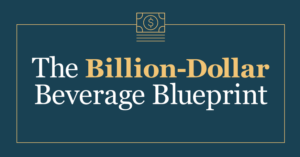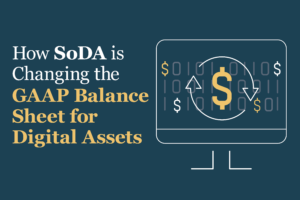Deciding Between Top-Down Vs Bottom-Up Forecasting

Matt Turner
Chief Financial Officer & CPG Practice Area Lead
January 12, 2022
Companies that conduct financial forecasts typically have two general models from which to choose: They can either opt for top-down or bottom-up forecasting.
The first model starts with a general overview look before drilling down to specific terms, while the latter model does the exact opposite. Both forecasting models can be effective when used properly, but some companies prefer to use one over the other for various reasons.
Before you make your decision on conducting a top-down or bottom-up forecast, it’s important to understand the advantages and disadvantages that each provides, as well as the differences between the two models.
What is Financial Forecasting?
Financial forecasting is quite simply the process when a company or individual try to predict future events based on past events and current standing. The idea behind financial forecasting is that you can determine the triggers and assumptions for future results so you can make sound decisions today and continue to measure your performance against those assumptions, updating throughout the year/years as necessary.
Companies should focus their forecasting on revenue, costs, and working capital metrics that drive the business. By accurately forecasting these metrics, a company can make adjustments to its budget to help it accomplish the goals it wants to achieve in the year ahead.
If the forecast shows an increase in sales year-over-year, the company may decide to invest in things such as new equipment or additional employees to support the growth. If the forecast shows a decrease, the company can make moves now to change the trajectory, such as investing more in marketing and outreach. It can also cut back on expenses or hold off on investments until the year plays out.
Financial forecasting is an essential part of running a successful business for the long term.
What is a Bottom-Up Financial Model?
A bottom-up forecast goes from the specific to the general, usually with a focus on individual departments first, and combining them to create a company-wide forecast.
Advantages vs. Disadvantages
This method allows a company to take a department-by-department look ahead so that adjustments can be made at the base level. These changes made at the departmental level can help department leads own the process and make decisions throughout the year.
It also helps to motivate employees, because it involves applicable goals and KPIs. The bottom-up approach focuses on departments rather than goals the company sets that may not be directly relevant to them.
On the flip side, bottom-up forecasting can take a lot of time and organization of the departments to complete and manage throughout the year. You need to leverage the department leads and provide monthly departmental variance reporting throughout the year. The focus on the details can lead to missing some of the grand vision of the company without proper guidance from the CEO and CFO. This method is typically reserved for maturing companies.
What is Top-Down Forecasting?
Top-down forecasting works the exact opposite way. It focuses on macroeconomics, which analyzes the big picture first and all the components that comprise it.
Companies that use the top-down forecasting method look at how overarching trends can affect their specific sector. They look at the available market size that’s available, weigh it with market trends and then make predictions regarding how their business could perform in that market.
Top-down forecasts will then weigh the weaknesses and strengths of the business as they relate to the overall market.
Advantages vs. Disadvantages
Top-down forecasting is the simpler of the two methods. Because it’s less granularly focused, businesses are able to forecast with fewer resources, instead using industry and market trends to create high-level assumptions.
It’s a lot easier and faster to complete since you won’t have multiple department leads analyzing every detail of the company’s activities to complete the forecast.
A major disadvantage of top-down forecasting is that sales, inventory, and most relevant data points are averaged. This can make tracking the root of variances from projections difficult to assess. This method is typically reserved for earlier-stage companies lacking the resources to manage a bottom-up approach.
What is the Difference Between Top-Down and Bottom-Up Forecasting?
The major difference between top-down and bottom-up forecasting is the approach to forecasting. Top-down focuses on the big picture and doesn’t worry as much about granular details such as departmental data. It instead focuses on a company’s potential compared to the rest of the market and the opportunity in that market.
Bottom-up forecasting, by contrast, focuses much more on the granular data that’s available from each department of a company.
What is the Best Way to Do Your Financial Forecast?
There’s no one “right” way to conduct your financial forecast, since your specific business, specific industry, and specific product or service line will dictate what’s best. That being said, using a hybrid approach of both top-down and bottom-up forecasting has proven to be successful for many businesses.
The top-down aspect would have the company project a sales forecast that’s derived from the overarching sales data of the entire organization. It then incorporates bottom-up principles such as using departmental data to model the operating expenses. When weighing the two outcomes, the company can more accurately forecast what the actual sales numbers will be for the coming year.
This hybrid approach is especially great for any business that has a diversified product line, or a product line that has different variations, such as clothes with different sizes.
That being said, all companies can benefit from taking the best parts of top-down forecasting and combining it with the best parts of bottom-up forecasting.
For more information on forecasting, reach out to the Propeller team to see how we can help.



